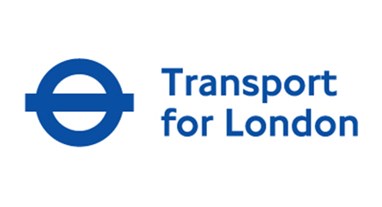Transport for London


Integrating Datasets: Complex data modelling reduces flood risk for London Underground
The Central Line, one of London Underground’s busiest, was partially suspended by a burst water main resulting in huge disruption for travellers and lost revenue for the network.
These events highlighted the importance of mitigating flood risk across London’s critical Underground network. Transport for London (TfL, the agency responsible for the capital’s transport services) instigated a review of flood risk across its network of 270 stations.
“Reports had been commissioned for different parts of the network in the past,” explains Richard Hartley, TfL’s former GIS Manager for Rail and Underground, "but they were ad hoc. They were in different formats and not comparable. We needed an analysis that was network-wide, consistent and objective.” Previous reports had also represented a single point in time. Naomi Ang, TfL’s Senior GIS Specialist on the Flood Risk Project adds, “One of our main aims was to enable active flood risk management. We didn’t want a report that would be immediately obsolete and just filed away. We wanted to continually update our datasets and refine the analysis so that it’s always up to date and reflecting any environmental (or asset) changes.”
Streamlined and automated data transformation
When Richard joined TfL, it was using several older versions of Safe Software’s FME product in different departments, each with a different support partner. Richard upgraded the software, consolidating all of the licences under a single agreement, a contract that 1Spatial won to provide the licences, technical support,
training and consultancy for all of TfL. “The consultancy days with 1Spatial have been really helpful,” Richard says. “In between the sessions, we maintain a list of issues we can’t work out ourselves or functionality we’d like to implement but haven’t got time to investigate. Sometimes, it’s easier to get a subject matter expert to look at your live data and resolve the problem for you, rather than trying to describe an issue over the phone.” FME supports the Ordnance Survey’s GridInquest and, more recently, GridInquestII tools and Richard, with support from 1Spatial, used this to develop a new translation process.
"We didn’t want a report that would be immediately obsolete and just filed away. We wanted to continually update our datasets and refine the analysis so that it is always up to date and reflecting any environmental (or asset) changes."
Quicker, simpler and more accurate
“The new transformation method translates the whole of the London Survey Grid (LSG) area in one go,” explains Richard. “It avoids the problems of splitting data into zones and saves us a huge amount of time and money. It’s quicker, simpler and more accurate. What’s not to like? Since we implemented the new FME
transformation, it is estimated that we have reduced our total data processing time by 13 weeks per year. In addition, We’ve saved £15,000 in staff time through automating the transformation of Ordnance Survey base mapping.”
“LSG transformation was the major obstacle in the first year of the project,” adds Naomi. “The new FME process has removed that and allowed me to focus on more valuable aspects of the data and analysis. We’ve found we can do much more with the data than we realised, because we have the time to focus on analysis.” The Flood Risk Management GIS model is now available for 100 users to perform their own analyses. The GIS team is using the LSG transformation process to support other teams, too, as Richard explains: “The CAD team update their Ordnance Survey Base Map data several times a year. That used to be a two-week process for them. Now, with FME, it takes just 18 hours and they can run it over the weekend.” The consultancy days have also had a direct and measurable impact. Faced with an urgent deadline to deliver information for the legal department, a 20-minute conversation and “process hack” recommended by 1Spatial consultant David Eagle solved the problem. “In the past,” says Richard, “we’d have had to commission additional survey work and it would have cost £15,000.”
Enhancing decision-making
FME, with consultancy, training and support provided by 1Spatial, is now a core tool for TfL’s GIS teams. And, it is set to become even more central. The original GridInquest tool was 32-bit only. Ordnance Survey have recently released GridInquestII in 64-bit, which would allow the TfL team to perform translations even
more quickly. Richard explains, “Along with 1Spatial, we’ve been asking Safe Software to include the new tool in the 64-bit version of FME, and I’ve been impressed at how quickly Safe have done that. One of the benefits of working with 1Spatial is that they have a very deep relationship with Safe that has allowed us to present and escalate our business case to the right part of the company.” Naomi has also developed a prototype for a predictive version of the Flood Risk model which draws on weather data from the Met Office. Using real-time forecast data would transform the Flood Risk model from a long term investment-support tool into a valuable operational tool that would enable TfL to despatch required defences in advance of expected danger.
“We’re just scratching the surface of what we can do,” Richard says. “We’re adding and developing new datasets all the time.” He adds, “With FME, GIS has become a tool for sharing data and making it accessible within the business. We’re linking different enterprise systems and bringing data together: asset management, document management, CAD systems and so on. We are enhancing decision-making across the business.”
Effective prioritisation of investment
“The objective of the project was to determine which assets were at the highest risk of flooding so that we could focus our efforts on mitigating the risk to those assets,” Naomi explains.
"Today, we have a network wide view, created on an objective, data-driven basis, that can be maintained to reflect future changes."
The Flood Risk model has now been run separately against each of approximately 4,000 different potential points of water entry across the Underground network. The team has worked with TfL’s flood risk engineers to better understand how water flows through different entrances and to refine the model.

